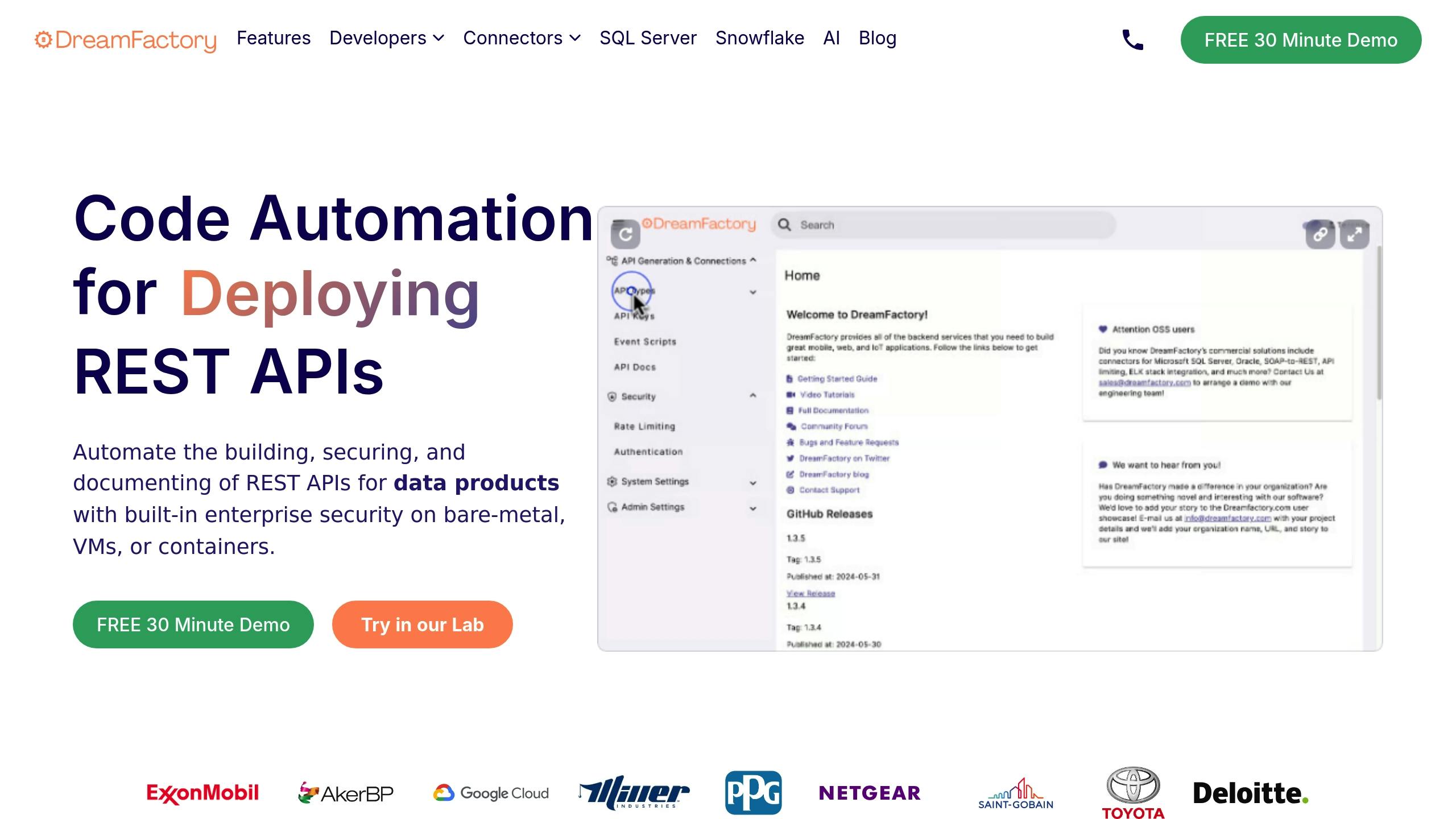When dealing with sharded APIs, scaling is easier, but maintaining data consistency becomes a challenge, especially in high-latency environments. Here's the core problem: as data gets spread across multiple shards (or databases), operations like updates, reads, and transactions can lag or fail, leading to stale data, conflicts, or inconsistent states. This is especially problematic for critical applications like financial systems or e-commerce platforms.
Key Points:
Sharding is the process of dividing a database into smaller pieces for better performance and scalability.
High latency in distributed systems can cause:
Delays in data syncing across shards.
Write conflicts or partial failures during updates.
Complicated cross-shard transactions.
Solutions:
Consistency Models:
Strong consistency: Guarantees immediate updates but increases latency.
Eventual consistency: Faster but allows temporary mismatches.
Mixed models: Combine both approaches based on specific needs.
Distributed Transactions:
Use Two-Phase Commit (2PC) for critical operations.
Implement Saga patterns for more flexible, step-by-step transactions.
Data Modeling:
Choose the right sharding key to minimize cross-shard operations.
Use denormalization to store related data together for faster queries.
Caching:
Use tools like Redis for faster reads.
Align caching strategies with sharding to reduce latency.
Tools:
Platforms like DreamFactory simplify API management in sharded environments by automating tasks like schema mapping, security enforcement, and consistency checks. They also support scripting for handling complex cross-shard transactions.
Bottom Line: Balancing consistency and latency requires tailored strategies. Start by identifying areas where accuracy is critical versus where speed matters most. Combine techniques like caching, distributed transactions, and proper data modeling to maintain a reliable system.
How @ShopifyEngineering avoids hot shards by moving data across databases without any downtime
Consistency Models and Their Trade-offs
Continuing from our earlier discussion on sharding challenges, let’s dive into consistency models and the compromises they bring. When designing sharded APIs, it’s essential to understand these models so you can choose the right level of consistency for different parts of your application.
Strong vs. Eventual Consistency
Strong consistency ensures that all nodes reflect the same data at the same time. For instance, if a user updates their profile, every subsequent read from any shard will immediately show the updated information. This approach guarantees accuracy but often comes at the expense of performance.
Here’s a real-world example: Azure Cosmos DB achieves read latencies under 10 milliseconds at the 99th percentile, with an average of around 4 milliseconds across all consistency levels. However, write operations under strong consistency - especially across geographically distant regions - can experience significant delays. To manage this, Azure even restricts strong consistency by default for accounts spanning over 5,000 miles (8,000 kilometers) due to the high write latency involved.
On the other hand, eventual consistency permits temporary discrepancies between shards. For example, when a user updates their profile, it might take some time for the update to reflect everywhere. However, the system eventually reaches a consistent state. This model prioritizes availability and speed, making it ideal for scenarios where immediate consistency isn’t critical.
Mixed Consistency Models
A practical approach is to use mixed consistency models, tailoring the consistency level for each API endpoint based on its specific requirements. This allows you to balance performance and accuracy across your system.
To make mixed consistency work, you’ll need to ensure idempotency in your microservices. This means handling repeated events or commands without causing unintended side effects - a crucial safeguard in eventual consistency scenarios to avoid data corruption.
Balancing Consistency and Latency
Finding the right balance between consistency and latency depends on your application’s priorities. Opt for strong consistency in areas where data correctness is non-negotiable. For other parts of your system, where speed and availability matter more, eventual consistency may be the better choice.
Monitoring plays a key role in managing this balance. Implement event-driven monitoring and alerting to catch delays or failures early. Additionally, reducing reliance on synchronous calls between services can minimize tight coupling, enhance fault tolerance, and improve overall system reliability.
Strategies for Maintaining Data Consistency Under High Latency
Now that we've looked at different consistency models, let’s dive into practical ways to maintain data consistency in your sharded APIs, even when high latency is a challenge. These strategies will help you design systems that stay reliable and efficient, even when network delays are unavoidable.
Data Modeling and Partitioning Best Practices
The backbone of consistent sharded APIs lies in thoughtful data modeling. Choosing the right sharding key is critical - it determines how often your system needs to perform costly cross-shard operations. Ideally, related data should be grouped together whenever possible.
Denormalization can boost performance in high-latency environments. While traditional database design prioritizes normalization, sharded systems often benefit from duplicating data strategically. By storing frequently accessed related data together - even if it means having multiple copies - you can significantly improve query performance. In distributed systems, this trade-off between storage and speed often leans in favor of speed.
For complex data relationships, consider hierarchical sharding. Use a primary sharding key (like a customer ID) alongside secondary keys (such as an order ID) to keep data localized while maintaining flexibility for queries.
Time-based partitioning is another effective approach, especially for event-driven data. Pair it with other sharding strategies to handle both real-time operations and historical queries efficiently. Recent data can stay on faster, more accessible shards, while older data is stored on cost-effective, slower storage.
Once your data model is solid, the next step is managing distributed transactions effectively.
Managing Distributed Transactions
Distributed transactions in high-latency environments require careful planning to maintain consistency. Two-phase commit (2PC) is a classic approach that ensures strong consistency, but it can be slow and fragile in networks with high latency. Reserve it for situations where consistency is absolutely critical.
A more flexible alternative is the saga pattern. It breaks complex transactions into smaller, independent steps, each of which can be executed and, if necessary, rolled back individually. Each step triggers the next through event publishing, creating a chain of operations that can handle failures more gracefully. For example, compensating actions can reverse earlier steps if something goes wrong.
Pairing event sourcing with command query responsibility segregation (CQRS) is another effective method. By storing all changes as events and building read models asynchronously, you can separate write operations (which need strict consistency) from read operations (which can tolerate some delay).
Finally, implement idempotency to ensure that retries caused by network issues don’t result in duplicate operations or unintended side effects.
Using Distributed Caching
Distributed caching is a powerful tool for reducing the impact of high latency, complementing your data modeling and transaction strategies. Tools like Redis Cluster and Apache Ignite are excellent choices for caching frequently accessed data closer to your application servers.
Write-through caching is ideal for data that changes infrequently but is read often. In this method, updates are written to both the database and the cache simultaneously, ensuring that the cache remains up-to-date while providing fast read access. This is particularly useful for data like user profiles or configuration settings.
Write-behind caching offers another option for managing high-latency writes. Here, the cache accepts writes immediately and updates the underlying database asynchronously. While this approach improves perceived performance, it requires careful handling of potential cache failures and recovery scenarios.
To maximize cache efficiency, align your cache partitioning with your database sharding strategy. Use consistent hashing to distribute data across cache nodes, keeping related data together. This minimizes cache misses and boosts system performance.
Implement event-driven cache invalidation to ensure that changes in the database are quickly reflected in the cache. Use cache versioning to handle race conditions between updates and invalidations.
For read-heavy workloads, combining read replicas with intelligent caching can significantly reduce latency. Route read requests to the nearest replica and cache results locally. Use cache warming techniques to preload frequently accessed data ahead of peak demand.
Finally, consider application-level caching for complex query results that span multiple shards. Instead of caching individual shard responses, cache the fully assembled results. This reduces the computational load of reassembling distributed queries and speeds up response times for complex operations.
How DreamFactory Simplifies Consistency Management

DreamFactory makes it easier to manage data consistency across sharded APIs, addressing challenges like schema mismatches and high latency. By automating API generation and management, it provides tools to align schemas, enforce security, and maintain consistency across distributed systems. Let’s dive into how DreamFactory handles API generation and ongoing management.
Instant API Generation and Schema Mapping
DreamFactory simplifies the process of creating APIs with its automatic API generation, ensuring consistent interfaces across multiple database instances. This is particularly helpful in sharded environments, where each shard might have slight variations in schema or connection requirements. By generating REST APIs that abstract these differences, DreamFactory eliminates the need for manual adjustments.
The platform also includes database schema mapping, which keeps APIs consistent even as the underlying database structures change. This is crucial for sharded systems where schema updates often need to be rolled out gradually. Additionally, auto-generated Swagger documentation ensures API documentation stays up to date, automatically reflecting any schema changes and reducing the need for manual updates.
With support for over 20 connectors, including Snowflake, SQL Server, and MongoDB, DreamFactory maintains uniform API interfaces even when your architecture spans multiple database technologies. This flexibility is invaluable for organizations managing diverse data types or transitioning between technologies.
Built-in Security and Access Controls
Maintaining security consistency across sharded systems can be a headache, but DreamFactory simplifies this with its role-based access control (RBAC) system. By applying security policies uniformly across all sharded APIs, it eliminates the risk of manual misconfigurations.
The platform also offers centralized API key management, allowing you to control access credentials across distributed architectures. API keys can be configured with specific permissions that automatically apply to all relevant shards, removing the need for separate key management for each database instance.
DreamFactory’s OAuth integration provides a unified authentication mechanism that works seamlessly across all sharded APIs. This ensures consistent user sessions, regardless of which shard processes the request, and eliminates the complexity of managing separate authentication systems.
For organizations needing to comply with regulations, DreamFactory’s GDPR and HIPAA compliance features enforce data handling policies consistently across all connected databases. This ensures that even in distributed environments, compliance requirements are met without additional effort.
Server-Side Scripting for Custom Logic
DreamFactory goes beyond basic API generation and security by offering server-side scripting to handle more complex consistency management needs. With support for Python, PHP, NodeJS, and V8JS, you can implement custom logic tailored to your sharded environment.
For example, you can write scripts to manage cross-shard transactions using the saga patterns often required in distributed systems. A Python script can handle multi-step transactions across shards, including compensating actions if something goes wrong. These scripts run server-side, reducing latency and giving you more control over transaction timing.
You can also use scripting to implement custom cache invalidation logic, ensuring distributed caches are updated automatically when data changes. Instead of relying on manual cache updates, scripts can intelligently manage cache entries across multiple nodes based on your business rules.
The scripting environment further supports event-driven workflows, enabling automated consistency checks or data synchronization processes. For instance, you could create scripts to validate data consistency across shards after specific operations or to trigger cache warming when new data is added.
Finally, DreamFactory’s unlimited API creation and volume capabilities let you create as many custom endpoints as needed. This allows you to design specialized APIs for tasks like read operations, write operations, or consistency validation, all without worrying about platform limitations.
Comparison of Consistency Methods and Latency Solutions
When building sharded APIs, balancing consistency and performance is a delicate act. Each method comes with its own set of trade-offs, and the right choice depends heavily on your application's specific needs.
Let’s break down some key strategies for managing high latency in sharded environments and how they stack up.
Distributed caching is a go-to solution for reducing latency. By storing frequently accessed data closer to users, it prioritizes speed. However, this comes with a caveat - data might not always be up-to-date. This method works well for read-heavy applications where slight data staleness is acceptable, such as user sessions or product catalogs.
Distributed transaction management focuses on ensuring data accuracy. A common method here is the Two-Phase Commit (2PC), which enforces strong consistency by requiring all nodes to agree before changes are finalized. While this guarantees accuracy, it can slow things down significantly in high-latency setups since every node must confirm the transaction.
Asynchronous patterns like the Saga offer a compromise. Transactions are broken into smaller steps, with compensating actions used to maintain overall data integrity. This avoids blocking operations, making it a good fit for workflows like order processing or user onboarding. However, the complexity of compensation logic can make debugging more challenging.
Multi-region distributed databases take a different approach by placing data closer to users geographically. This setup reduces latency for local operations, but cross-region transactions may still experience delays due to synchronization between distant nodes. This method is particularly useful for global applications or scenarios with compliance requirements, though it adds significant infrastructure complexity.
Here’s a quick summary of these strategies to help you decide:
Strategy Comparison Table
|
Strategy |
Consistency Level |
Latency Impact |
Best Use Cases |
Main Drawbacks |
|---|---|---|---|---|
|
Distributed Caching |
Eventual |
Very Low |
Read-heavy applications, user sessions, product catalogs |
Potential data staleness |
|
Two-Phase Commit (2PC) |
Strong |
High |
Financial transactions, inventory management |
Blocking operations, potential single point of failure |
|
Saga Pattern |
Eventual |
Medium |
Order processing, user onboarding workflows |
Complex compensation logic, debugging challenges |
|
Multi-Region Distribution |
Strong (local) / Medium (cross-region) |
Low (local) / Medium (cross-region) |
Global applications, compliance scenarios |
Infrastructure complexity, cross-region synchronization costs |
Each method has its place in a well-designed system. For example, an e-commerce platform might use distributed caching to serve product details quickly, the Saga pattern to manage order workflows, and 2PC for critical operations like payments.
However, geographic distribution introduces additional challenges. While placing data closer to users can reduce latency for local operations, cross-region synchronization remains a hurdle, particularly when dealing with data residency or compliance requirements.
Ultimately, the best strategy depends on your use case and the specific trade-offs you’re willing to accept.
Conclusion and Key Takeaways
Handling data consistency in sharded APIs with high latency calls for approaches that align closely with your specific use cases and technical needs.
When strong consistency is a priority - such as in financial transactions or inventory systems - accuracy is guaranteed, but it comes at the cost of increased latency in distributed setups. On the other hand, eventual consistency improves performance but demands careful planning to manage temporary inconsistencies and their impact on users. Balancing these trade-offs is key to designing an effective architecture.
Start by evaluating your data access patterns to determine the right consistency models for your needs. The best solutions often combine multiple strategies, avoiding unnecessary complexity while meeting your application's requirements.
DreamFactory makes this process easier by automating API generation while integrating security and scripting capabilities. It supports a variety of database connectors, ensuring consistent access to data across different systems. By streamlining API creation and enforcing consistency, DreamFactory becomes a valuable tool for managing sharded environments.
Focus on understanding your data's behavior. Identify which operations demand immediate consistency and which can accommodate delays. This clarity will help you select the most suitable consistency model without overcomplicating your setup.
Finally, continuous monitoring and observability are critical in high-latency environments. They help detect potential consistency issues early, allowing you to fine-tune strategies as your application scales and user behavior evolves.
FAQs
When deciding between strong consistency and eventual consistency for your sharded API, the choice hinges on what your application needs most.
With strong consistency, every read operation reflects the most recent write. This is a must-have for applications where precision and reliability are paramount - think financial transactions or systems where even the smallest error can have serious consequences. However, the trade-off is higher latency and potentially lower availability, especially in networks with significant delays.
In contrast, eventual consistency focuses on speed and scalability. It allows for temporary inconsistencies, which works well for scenarios like social media feeds, where absolute accuracy isn't immediately necessary. The key is to weigh your application's priorities: do you need real-time precision, or is performance and availability your top concern? Choose the consistency model that best matches your application's goals.
When managing distributed transactions in environments with high latency, tackling data consistency and reducing delays is a top priority. One effective approach is using optimistic concurrency control, which minimizes locking and waiting times, ultimately boosting system performance.
Regularly monitoring network latency is another essential step. Pair this with data replication to keep distributed nodes in sync. Additionally, employing resiliency patterns and clearly defining transaction boundaries can help reduce the effects of latency. These practices are key to keeping your system dependable and maintaining data integrity, especially in a sharded API setup.
DreamFactory makes handling data consistency in sharded APIs a breeze by automating the creation of secure, standardized REST APIs for multiple database shards. This means you get a uniform API structure, even when working with distributed systems or dealing with high network latency.
Equipped with features like schema management, real-time data synchronization, and server-side scripting, DreamFactory ensures data integrity across shards. These capabilities let you tailor workflows, automate routine tasks, and manage complex data operations effortlessly, keeping your APIs dependable and consistent regardless of the environment.
Kevin McGahey is an accomplished solutions engineer and product lead with expertise in API generation, microservices, and legacy system modernization, as demonstrated by his successful track record of facilitating the modernization of legacy databases for numerous public sector organizations.
























 Blog
Blog


